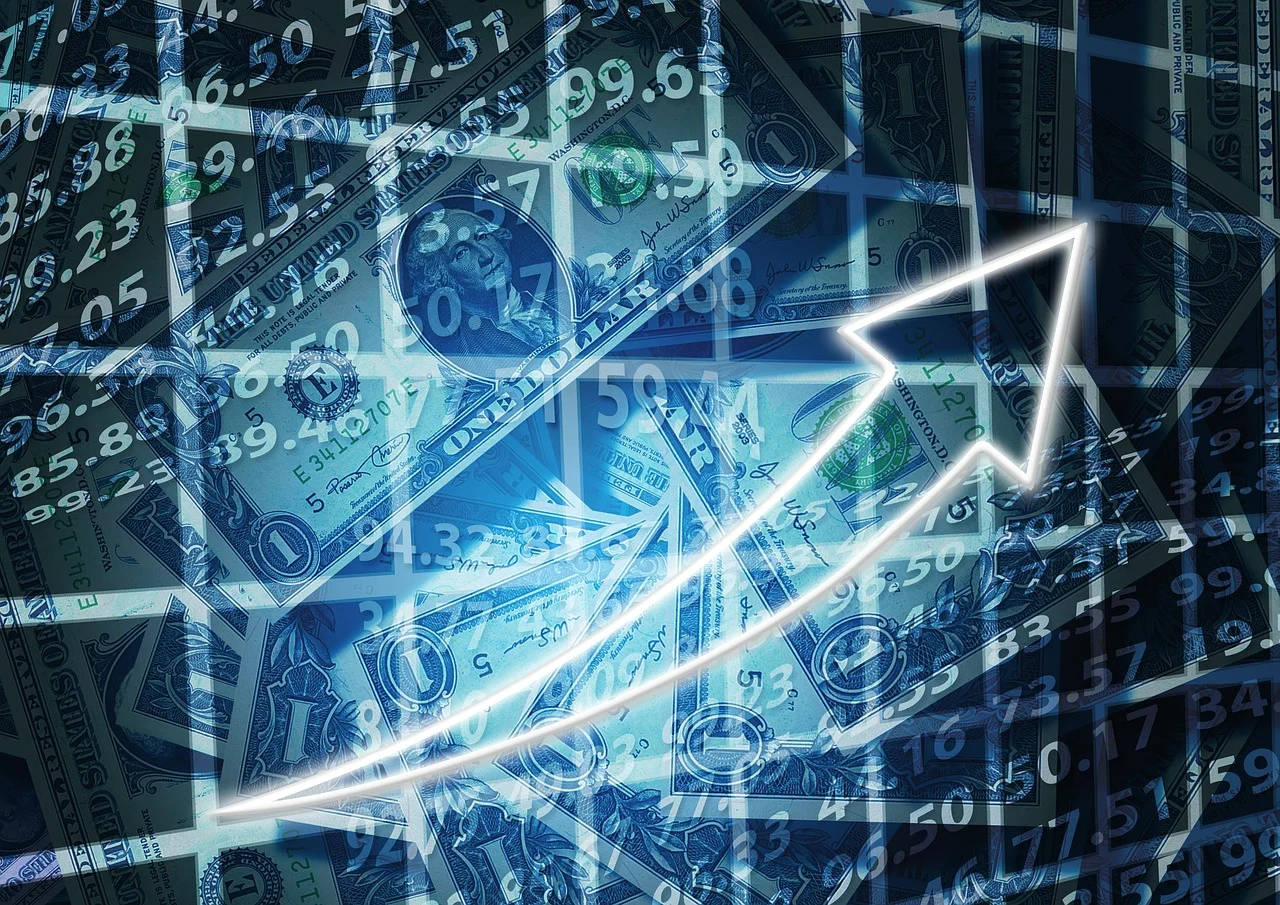1. Global Economic Risks 2025: Will Inflation or Innovation Win the Year?
The global economy in 2025 stands at a critical intersection where persistent inflation collides with groundbreaking innovation. On one hand, central banks worldwide continue to struggle with inflationary pressures fueled by years of loose monetary policy, energy shocks, and supply chain instability. Rising consumer prices have eroded purchasing power, while elevated interest rates threaten economic growth. These inflationary forces are one of the most prominent global economic risks in 2025, particularly in emerging markets where debt levels are high and monetary buffers are limited. If inflation remains sticky, it could trigger social unrest, market volatility, and policy uncertainty on a global scale.
Yet, 2025 is also witnessing rapid innovation across sectors like artificial intelligence, green energy, and digital finance. These advancements offer the potential to offset some economic risks by boosting productivity, creating new markets, and driving investment. Tech-led growth, if managed well, could counterbalance inflationary pressures and create opportunities for economic resilience. The key question is whether global economies can effectively harness innovation while containing inflation. This tug-of-war between risk and reward will define not just national growth trajectories, but also global financial stability, making it essential for policymakers and investors to closely monitor both sides of the coin.
2. From Boom to Bust? Decoding Market Volatility and Global Economic Risks
2025 continues to be a rollercoaster ride for investors as financial markets swing between euphoria and panic. Market volatility, driven by central bank decisions, fluctuating commodity prices, and geopolitical uncertainty, reflects the fragile state of global confidence. Investors are grappling with mixed signals: resilient labor markets in some regions contrast with slowing GDP growth and rising defaults elsewhere. This uncertain investment climate highlights one of the central global economic risks of 2025 instability in capital markets. A misstep in monetary tightening or a sudden credit event could spark a domino effect, potentially pushing multiple economies toward a recession.
Moreover, speculative bubbles in asset classes such as tech stocks, cryptocurrencies, and even real estate in some markets pose hidden dangers. These bubbles, inflated by years of cheap liquidity, could burst under the weight of high interest rates and reduced consumer demand. For individuals and businesses, this means increased borrowing costs, reduced access to capital, and a more cautious investment environment. Navigating this unpredictable terrain requires understanding not just short-term movements, but also long-term systemic risks. While market volatility is a normal feature of capitalism, the scale and interconnectedness of today’s global financial systems mean that small disruptions can quickly escalate into major global economic events.
3. The Hidden Opportunities Behind Global Economic Risks in 2025
While much of the discourse around 2025 focuses on looming dangers, it’s important to recognize the opportunities that often arise amid global economic risks. Economic downturns tend to shake up the status quo, creating room for new industries, business models, and investment strategies. Companies that prioritize innovation, sustainability, and resilience can gain significant ground when traditional players falter. For example, countries and businesses that invest in clean energy and climate-smart agriculture could benefit from global shifts in consumer behavior and policy. As global supply chains realign, regions previously sidelined in the global economy may find themselves at the center of new trade routes and partnerships.
Moreover, periods of disruption often accelerate digitization and productivity gains. Governments, under pressure to mitigate economic risks, are likely to support digital infrastructure, education, and small business resilience. Investors who can look beyond short-term uncertainty and identify value in long-term trends may reap substantial rewards. Understanding global economic risks in 2025 isn’t just about avoiding collapse it’s also about spotting the inflection points that lead to growth. For proactive governments, entrepreneurs, and investors, this year may offer one of the best windows in decades to reimagine economic resilience and tap into transformative global trends.
4. Top 7 Global Economic Risks in 2025 That Could Trigger a Financial Crisis
The global economy faces a confluence of risks in 2025 that could collectively trigger the next financial crisis. Among the most pressing is sovereign debt distress especially in emerging markets burdened by high interest rates and shrinking fiscal space. Next, persistent inflation remains a major concern, forcing central banks to keep rates elevated, which in turn slows growth. Geopolitical tensions, particularly involving energy-exporting nations, pose another significant threat by destabilizing commodity markets and trade routes. Stagnant productivity, despite tech innovation, also adds to long-term structural weaknesses. In addition, banking sector fragility, driven by real estate downturns and non-performing loans, could ripple across financial systems.
Another risk is climate-induced disruptions, including extreme weather events that impact food security, insurance markets, and infrastructure investment. Finally, cybersecurity threats particularly targeting critical financial infrastructure pose a modern risk that could have systemic consequences. Each of these global economic risks in 2025 carries the potential to be a trigger event, but it is their interconnectedness that makes them truly dangerous. A shock in one area such as a sovereign default could cascade into a broader financial meltdown. Policymakers, investors, and global institutions must therefore prepare for complex, compounding crises, not just isolated events.
5. Global Trade Wars and Supply Chain Disruptions: What 2025 Holds
Global economic risks in 2025 are increasingly shaped by ongoing trade disputes and supply chain recalibrations. The decoupling of major economies such as the U.S. and China continues to upend decades of trade integration. Tariff hikes, export controls, and industrial policy shifts have led to uncertainty in manufacturing, technology transfers, and raw material flows. This has prompted businesses to pursue “friend shoring” and diversification strategies, but these come with costs: higher input prices, longer delivery times, and reduced efficiency. As nations compete to secure critical resources like semiconductors and rare earth elements, the risk of trade fragmentation grows, threatening global growth.
Supply chain disruptions are no longer just temporary inconveniences they’ve become a structural risk. Whether due to extreme weather events, labor shortages, or political instability in key transport hubs, disruptions now occur with alarming frequency. For global companies, this means higher costs and reduced competitiveness. For consumers, it means delayed products and price spikes. These pressures are likely to persist throughout 2025, making supply chain resilience a top priority. Governments are investing in reshoring and strategic reserves, but such moves may also exacerbate protectionism. The global economic risks tied to trade and logistics are likely to shape both policy and profits in the years ahead.
6. Is a Global Recession Inevitable? Economic Forecasts & Risk Signals
With multiple indicators flashing red, economists and investors alike are questioning whether a global recession in 2025 is now inevitable. Growth forecasts have been revised downward in both advanced and emerging economies, as tighter monetary policy, weak consumer demand, and falling industrial output take their toll. The International Monetary Fund and World Bank have both flagged the risk of a synchronized slowdown, especially if central banks continue prioritizing inflation control over growth. Key economic risk signals such as inverted yield curves, declining trade volumes, and rising unemployment in key sectors suggest that a recession could be more of a “when” than an “if.”
However, there is still debate about the depth and duration of any potential downturn. Unlike previous cycles, 2025 features some cushioning factors, such as robust household savings in developed economies, ongoing tech innovation, and fiscal stimulus in selected regions. The question is whether these positives can counterbalance the mounting global economic risks. Much will depend on geopolitical developments, interest rate trajectories, and the ability of governments to implement responsive fiscal policies. While a mild recession could offer a reset for overheated markets, a severe downturn especially one triggered by financial instability or energy shocks would have far-reaching consequences.
7. Global Economic Risks in 2025: How Geopolitical Tensions Are Reshaping Markets
Geopolitical instability is one of the most defining global economic risks in 2025, reshaping trade routes, investment patterns, and market behavior. Conflicts in key regions such as Eastern Europe, the South China Sea, and the Middle East have introduced a high level of uncertainty into global markets. These tensions not only disrupt energy and commodity flows but also force multinational companies to reconsider where and how they operate. Sanctions, export bans, and diplomatic standoffs are becoming more frequent, causing ripple effects across global supply chains. As countries increasingly prioritize national security over economic openness, the interconnected global economy we once knew is rapidly fragmenting.
These shifts are influencing capital flows, with investors seeking safety in low-risk assets and nations ramping up domestic production to reduce foreign dependencies. Sectors like defense, cybersecurity, and domestic manufacturing are benefiting from this trend, while export-dependent industries face challenges. Global economic risks in 2025 are no longer just about financial indicators they are deeply tied to political decisions and power plays. The rise of “economic statecraft” means that markets must now price in not only interest rates and inflation but also diplomatic volatility. For investors, businesses, and policymakers, staying ahead requires geopolitical foresight and adaptive strategies to manage the fallout.
8. The Role of Interest Rates and Inflation in 2025’s Economic Uncertainty
Rising interest rates continue to be a double-edged sword in the context of global economic risks in 2025. In response to persistent inflation, central banks around the world including the Federal Reserve, ECB, and others have maintained tighter monetary policies, driving up borrowing costs. While this has helped tame inflation in some regions, it’s also slowed consumer spending, housing markets, and business investment. For heavily indebted countries and companies, the burden of higher debt servicing costs threatens financial stability. The risk is that overcorrection through aggressive rate hikes could tip the global economy into a prolonged recession.
Meanwhile, inflation itself remains a formidable force, especially in developing nations where food and fuel costs make up a large portion of household expenses. Structural factors such as labor shortages, energy transition costs, and deglobalization continue to keep upward pressure on prices. Stagflation a combination of slow growth and high inflation is now a credible scenario in many regions. These dynamics are creating a challenging policy environment where central banks must strike a careful balance. As global economic risks in 2025 evolve, interest rate policy will remain one of the most closely watched and impactful tools capable of either stabilizing economies or deepening global financial distress.
9. Navigating Global Economic Risks: Strategies for Investors in 2025
For investors, 2025 presents a uniquely complex landscape, where managing global economic risks requires both caution and creativity. Traditional asset classes like equities and bonds are under pressure due to market volatility, uncertain growth, and inflation fears. As such, diversification is more crucial than ever. Investing across sectors, geographies, and asset types such as commodities, real estate, and digital assets can help mitigate concentrated risk. Defensive sectors like healthcare, utilities, and consumer staples may outperform in a downturn, while emerging sectors such as clean energy and AI present growth potential despite the macroeconomic headwinds.
In addition, risk management has become central to any investment strategy. This includes stress-testing portfolios for recession scenarios, monitoring geopolitical developments, and incorporating ESG (Environmental, Social, Governance) factors which increasingly influence regulatory and consumer behavior. Currency risk is also heightened in 2025, especially for international investors facing diverging monetary policies across countries. Moreover, liquidity management is vital, as tighter credit conditions could limit access to capital. Understanding global economic risks in 2025 is not just about reacting to headlines but anticipating how shifting fundamentals will impact asset values over time. Smart investors will combine macroeconomic awareness with tactical agility to survive and potentially thrive in a turbulent economic year.
10. Winners and Losers: Who Benefits When Economies Falter in 2025?
Economic downturns always create both casualties and unexpected beneficiaries, and 2025 is no different. While many businesses and sectors are struggling with the fallout from global economic risks, others are finding opportunity in crisis. For instance, cybersecurity firms, defense contractors, and energy producers (especially in renewables and LNG) are seeing strong demand due to geopolitical instability and the push for energy independence. Similarly, companies specializing in automation and AI are gaining traction as businesses look to cut costs and boost efficiency amid labor shortages and high wage inflation.
On the flip side, sectors like luxury retail, commercial real estate, and export-heavy manufacturing are experiencing significant pain. Consumers are tightening their belts, businesses are downsizing office spaces, and trade frictions continue to impact cross-border commerce. Developing countries that rely heavily on tourism or remittances are particularly vulnerable to capital flight and slower global growth. Understanding global economic risks in 2025 means recognizing not only what to avoid, but also where the growth is likely to emerge. For savvy entrepreneurs, investors, and governments, the goal should be to pivot quickly adapting to structural shifts while capitalizing on new market dynamics that arise during economic disruption.
11. Financial Collapse or Technological Boom? The Double-Edged Economy of 2025
2025 may go down in history as the year where the world teetered between financial collapse and a potential technological renaissance. On one end, rising global debt levels, banking sector instability, and the threat of asset bubbles bursting have raised alarms among economists and policymakers. These global economic risks are reminiscent of the conditions preceding past crises like 2008, albeit with new variables such as digital currencies, decentralized finance, and rising geopolitical fragmentation. The fear is that a single trigger like a sovereign default or a major cyberattack could lead to a cascading financial meltdown.
At the same time, technological breakthroughs in areas like AI, biotechnology, and clean energy are creating opportunities for exponential growth. Nations and companies that double down on innovation and resilience may outperform their peers despite the economic headwinds. In fact, many argue that the current volatility is accelerating the adoption of technologies that will define the next economic era. The key tension in 2025 is whether innovation can outpace collapse, or whether economic instability will crush momentum before it can take off. Understanding and managing global economic risks today requires not just caution but also a willingness to invest in the very innovations that may eventually solve them.
12. Global Economic Risks 2025: Lessons from Past Crises to Prepare Now
History provides valuable lessons in times of uncertainty, and global economic risks in 2025 bear striking similarities to past crises. The 2008 global financial crisis, the COVID-19 pandemic, and even the debt crises of the 1980s all highlight key patterns: unchecked risk-taking, delayed policy responses, and underestimation of systemic interdependence. In 2025, the global economy faces a combination of high debt, rising interest rates, and geopolitical instability factors that have all historically preceded significant downturns. Learning from these past episodes can guide current policy decisions, especially in areas like regulation, fiscal support, and crisis communication.
However, the 2025 landscape also includes new complexities that demand fresh thinking. For instance, digital assets and decentralized finance could either buffer or exacerbate financial shocks. Climate change poses risks that were not fully appreciated in previous downturns. And the sheer speed of information flow in the digital age means that panic can spread faster than ever before. Thus, while historical parallels are useful, they must be complemented by forward-looking strategies. Global economic risks in 2025 require a blend of past wisdom and present innovation, ensuring that societies are not just reacting but proactively preparing for whatever lies ahead.




